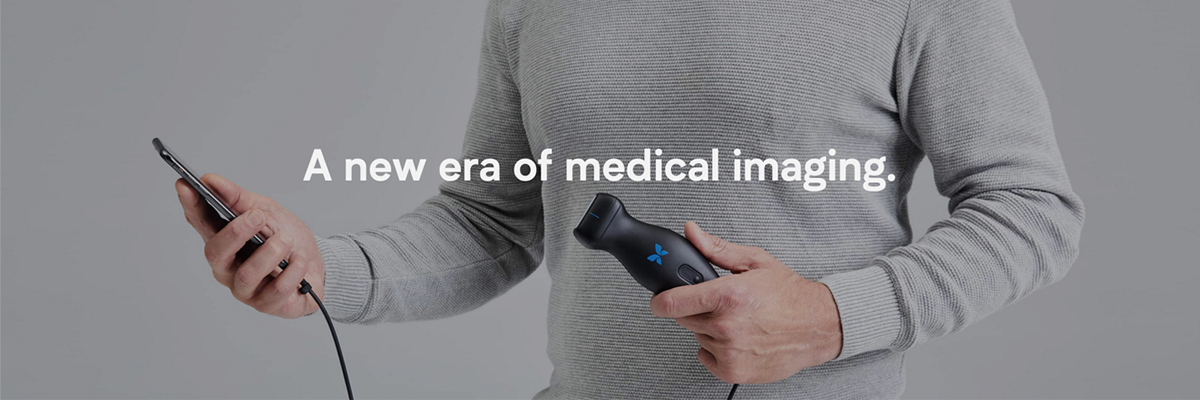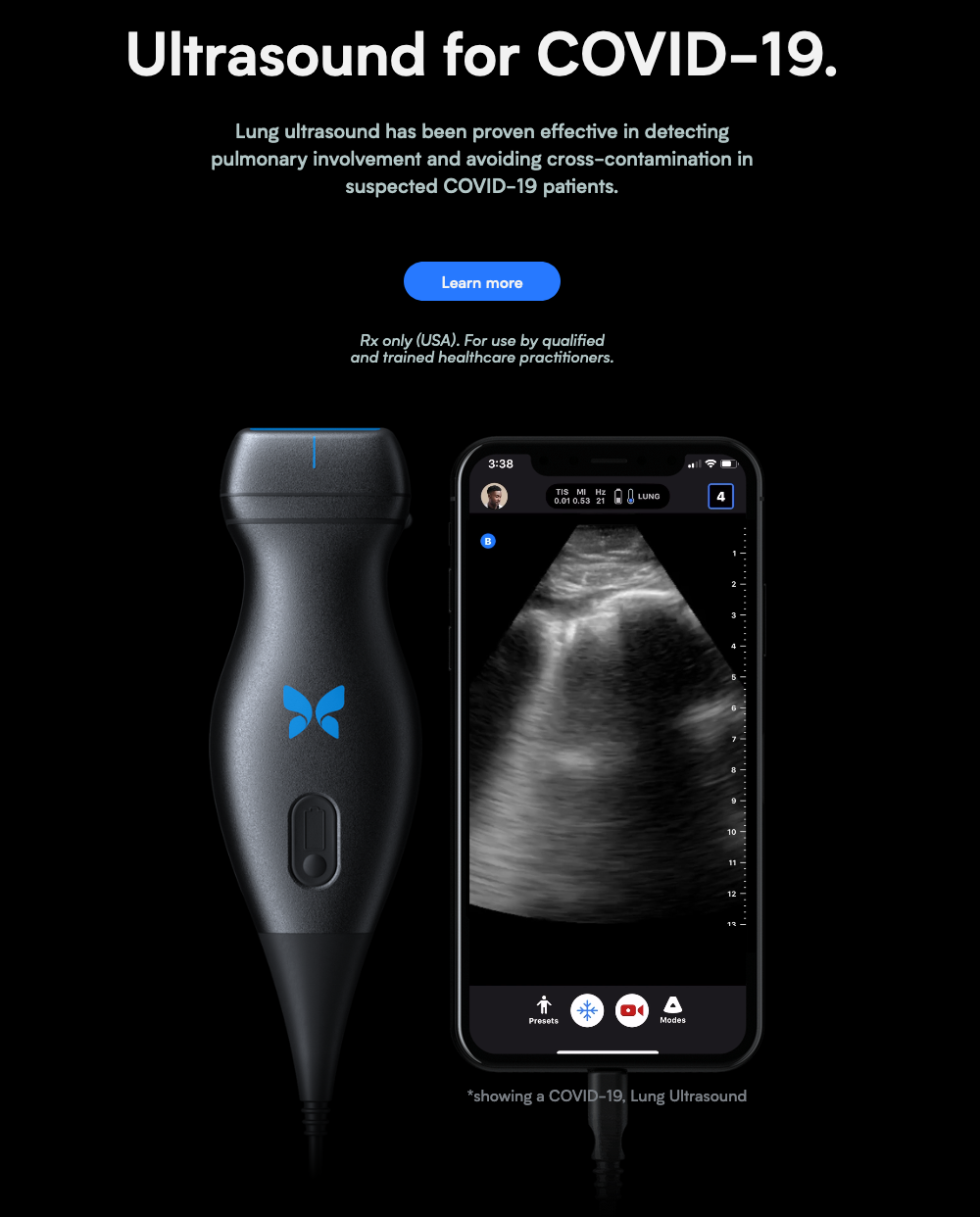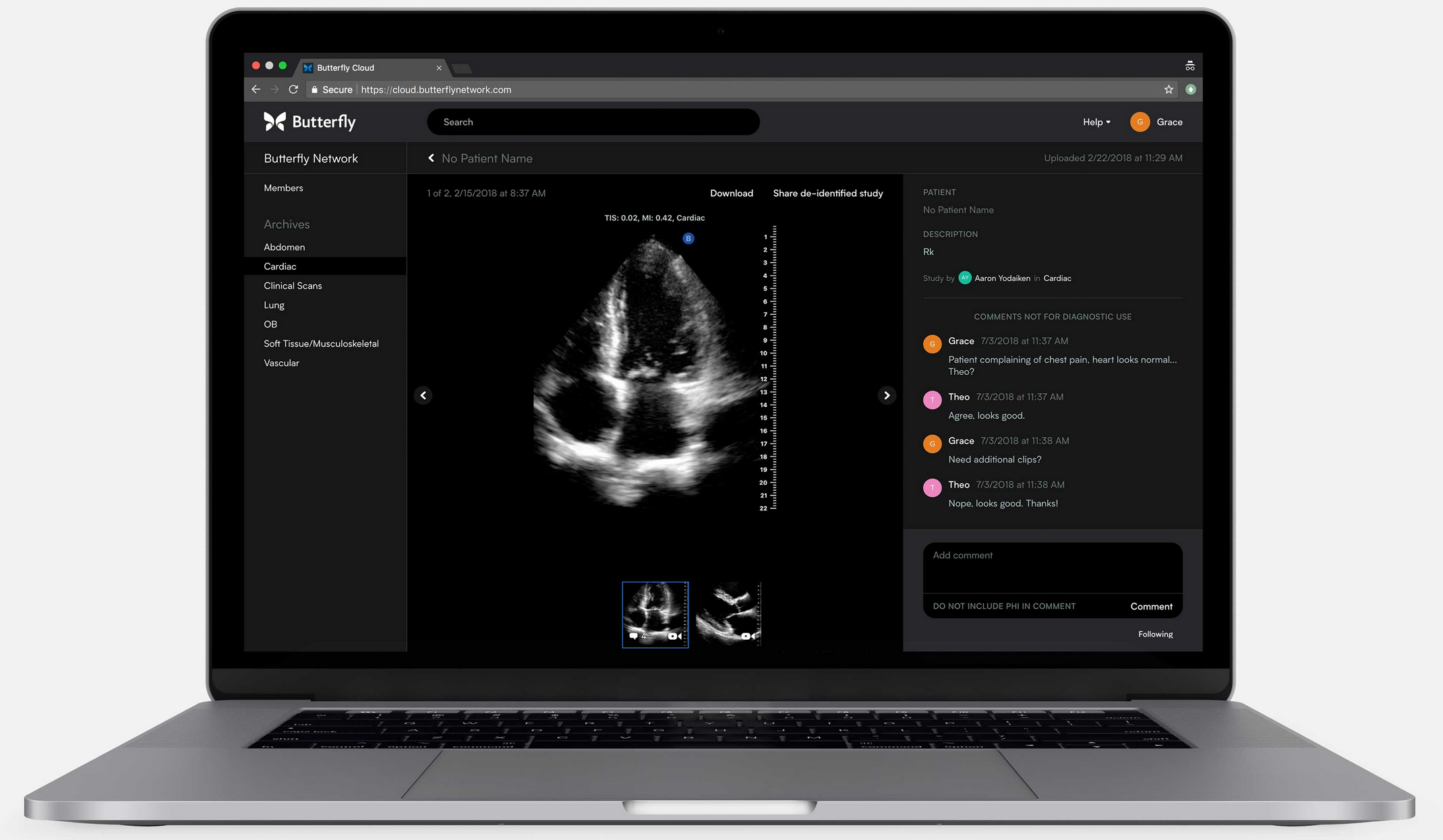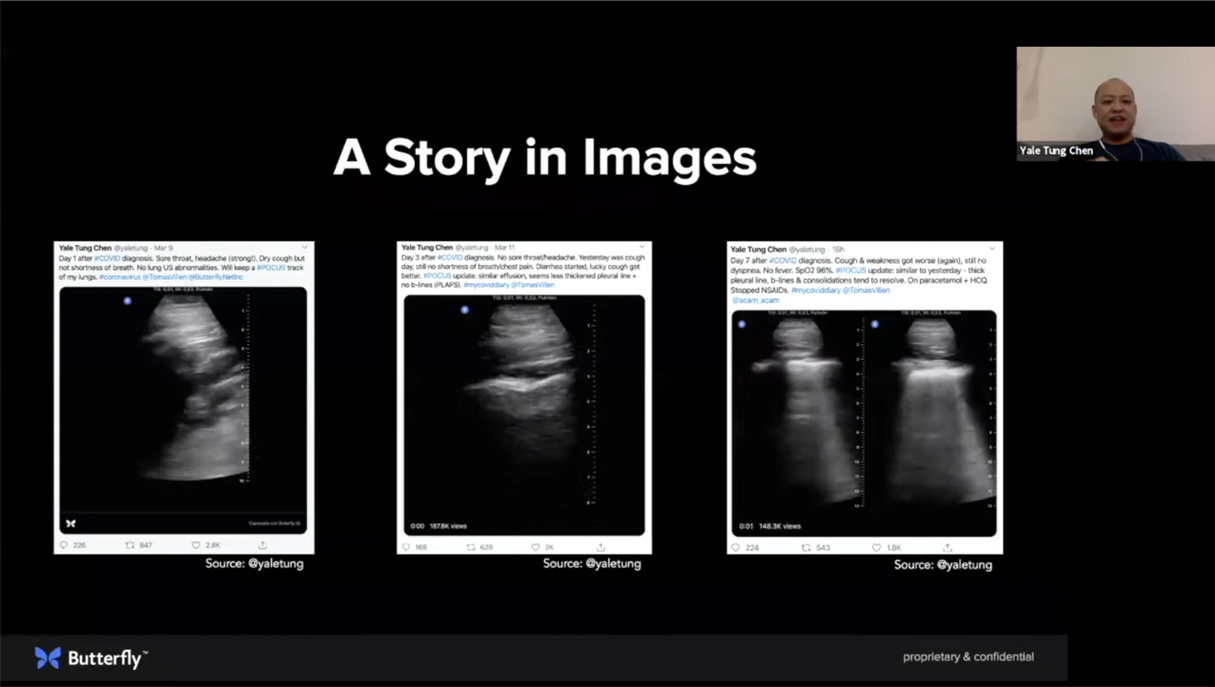Matt Grech
Content Marketing ManagerSmartling
With the entire world facing the threat of COVID-19, we have seen an all-hands-on-deck response from companies of all types, but especially by, hospitals, healthcare organizations and nonprofits.
With such a large force working around the clock to keep us all healthy and safe, the majority of existing processes have been turned on their head: the way we work has shifted fundamentally. And that has led to a boom in innovation, with doctors discovering how to repurpose technology and devices to better care for patients, and companies revolutionizing their services and solutions to aid in the world's recovery.
One amazing story that has popped up on our radar is the work being done by Butterfly Network. Already invested in providing ultrasound tech to developing communities around the world, Butterfly Network recognized the unique potential for their solution to aid in the diagnosis and monitoring of COVID-19 patients, especially in areas that lack traditional imagery tech.
Who is Butterfly Network?
About a year ago, Butterfly Network was making the news for bringing their hand-held Ultrasound Scanners to rural regions of Africa.
The company set out on the mission to democratize healthcare, and bring powerful medical imaging devices to regions and populations that may not have been able to benefit from the technology.

Butterfly Network developed the Butterfly iQ, a simple handheld device that enables doctors to turn their smartphones into a portable and easy to use medical imaging system, ready to use literally anywhere.
Ultrasound imaging tech was previously expensive, somewhat complicated to use, and restricted to a hospital or doctors office. But with the Butterfly iQ, doctors in areas like Africa and Southern America now have direct access to the same tech, even if they're out in rural and underdeveloped regions.
New challenges require new solutions
Respiratory illnesses like COVID-19 introduce some complexities that have altered the way medical professionals respond. Doctors must treat patients, but also take the precautions necessary to protect themselves, and prevent the spread of the virus even further.
According to an article published by doctors in the Lancet Respiratory Medicine journal, the typical response for monitoring a patient would involve multiple imaging tests including chest radiography and CT scans, while relying on tools like stethoscopes and radiological devices.
Each of these will need to be disinfected and special care must be taken to prevent the spread of the virus, which can easily jump from patient to doctor, doctor to nurse, nurse to tech, and to other patients or even family members from there.
The same article goes on to explain that a doctor initially recognized the benefit of portable ultrasound devices for diagnosing respiratory illnesses while maintaining proper isolation protocol -- a realization that has only become even more pertinent with the current situation the world is facing.
Working with front line doctors in China and Italy that had begun using ultrasound to detect and monitor COVID in patients, Butterfly Network developed, and made publicly available, diagnosis procedures and guidelines for using the iQ.
Butterfly Network explored a new paradigm
Part of the brilliance behind the iQ is their new breakthrough in medical imaging technology, utilizing microchips to replace traditional ultrasound technology.
This makes the iQ both more affordable and accessible for doctors and hospitals around the world with a completely portable, hand-held device, and also introduces a new level of versatility.
It's that versatility that has enabled Butterfly Network to pivot and focus their efforts on battling COVID-19. As it turns out, the Butterfly iQ can actually be used to potentially diagnose the virus by looking for anomalies in the lower region of a patient's lung.
The system is made up of two main components: the physical hand-held scanner, and an app. That's it.

The device is of course used to scan patients, while the app keeps everything simple. Users can swipe through different presets for imaging like Cardiac, Abdomen and Lung; different modes to help visualize any anomalies; and even the ability to adjust the scanner's gain or depth and measure right within the app itself.

And the Butterfly iQ can be used in various settings, furthering the accessibility of imaging tech:
1. Emergency Medicine
The butterfly iQ will be hugely beneficial to emergency departments handling the huge influx of COVID-19 patients as they won't have to rely on expensive CT technology. Instead doctors can utilize a simple and portable Butterfly iQ device, both for rapid detection and to help maintain isolation protocols.
2.Critical Care
The iQ makes it possible to quickly and easily monitor patients right at their bedside, instead of moving the patient to the device itself. This also further supports isolation, allowing for each individual patient to have their own scanner left at their bedside, preventing the risk of cross contamination.
3. Primary Care
The simplicity, affordability and portability of the iQ make it easy for any doctors office: primary care, urgent care, and even skilled nursing and home settings can now quickly utilize Ultrasound technology without having to relocate the patient. This furthers the accessibility of our medical technology, and helps bring advanced healthcare to the entire world.
4. Telemedicine
Systematic integration of portable ultrasound imaging in the community and leveraging telemedicine guidance when necessary, could facilitate early detection of imaging features typical of COVID-19, informing clinicians’ decisions around isolation and quarantine of early/asymptomatic cases.
With COVID-19 specifically, the Butterfly iQ aids in preventing the spread of the virus by limiting exposure between patients, provides a rapid method of diagnosing patients, and ultimately brings this advantage to doctors and hospitals literally all around the world.
Language Accessibility is critical
So the idea is simple: create a device and an application that can be used by doctors in the field around the world, literally around the world. They can be in the rural regions of Africa, as we've seen, and still effectively diagnose patients.
This is all made possible not only because the device is inexpensive and portable, but also because the power of the mobile app itself. Butterfly designed the user experience to be simple and quick, both for rapid diagnosis and ease of use.

Yet, there's a catch here: of course the doctor needs to be trained to use the device. But what if they can't read the app? Not all doctors around the world all read English, especially not in the regions that Butterfly is seeking to aid.
And that's where translation comes in. By translating their mobile app, doctors that have never spoken English can even access this amazing technology.
Diagnosing COVID-19 in the real world
Butterfly Network hosted a webinar to share their initial findings, and to directly highlight the story of Dr. Yale Tung Chen.

Dr. Chen works in a tertiary academic hospital that was treating patients that were suspected of having COVID at the time, relying on a CRP blood test to diagnose patients.
He managed to contract the virus while working on the front lines, but recovered without any concern, yet during his self-isolation, his wife managed to contract the virus as well, first coming down with a sore throat.
Immediately Dr. Chen turned to public health services to obtain a test for his wife, but due to a rapid increase in patients and demand for testing, the request was unfortunately denied.
Remembering back to his time in the hospital, utilizing Ultrasound to monitor COVID patients, Dr. Chen decided to take a look at his wife's lungs at home, and sure enough found the evidence he needed for a positive diagnosis.

From there Dr. Chen decided to monitor his own lungs to track the evolution of the virus within his system, and shared his findings with the world, and medical community, on Twitter.
Dr. Chen noted that this was a bit of a unique scenario, since not many hospitals were bothering to utilize a CT scan or other imaging tech on patients with mild symptoms. These procedures can be expensive, time consuming, and as we mentioned before, aid in spreading the virus.
But this unique experience has paved the way for what is potentially an entirely new paradigm for battling COVID-19. As a knowledgeable medical professional diagnosed with the Coronavirus, Dr. Chen took advantage of the situation to learn what he can, and share that information with the rest of the world.
Information must cross borders
This whole situation reinforced a lot of what we already know, but also helped introduce some new realizations. The world is more connected than ever before, and we are all battling this together.
It will be the universal sharing of information and technology that will help the world recover and thrive. Just like with the Butterfly iQ, language accessibility will enable brands and organizations to provide solutions, services and. Information around the world, regardless of location or native language.
Butterfly Network's story offers both an amazing example of the work being done around the world to battle COVID-19, and a real-world glimpse into how sharing information across borders will enable us to overcome any hurdle.









